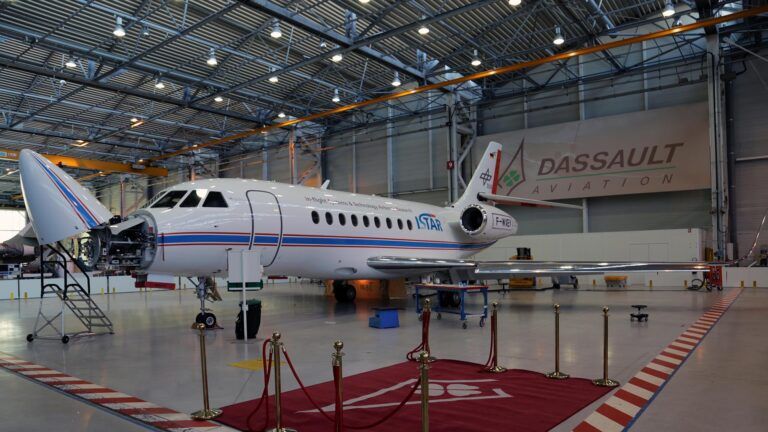DLR, the German Aerospace Research Centre’s, ISTAR flying testbed has arrived at its Flight Experiments facility in Braunschweig, Germany where engineers have begun fitting its flight test instrumentation.
The modified Falcon 2000LX jet flew from the Dassault plant in Bordeaux-Mérignac to its new home at the end of last month. While at the Dassault plant the twin-jet aircraft was fitted with sensors, mounting points and cable paths.
DLR engineers at Braunschweig are now fitting more instrumentation and commissioning the research aircraft, including conducting initial flights, ahead of its first use in a series of tests this summer.
The aircraft will be used for the evaluation of more automation in flight operations, pilot assistance systems and unmanned flight. Plans for the ISTAR were first revealed in 2018.
The ISTAR will not be completely finished until 2025 after more modifications are made during two further conversion phases in partnership with Dassault.
“ISTAR is opening a new chapter in aeronautics research at DLR,” said Rolf Henke, DLR executive board member for aeronautics research. “Our latest research aircraft will develop into a versatile test bed for optimised aerodynamics, flight guidance and flight control.
“ISTAR also enables a major leap forward in the digitalization of air transport. We are creating a digital twin for ISTAR, which will accompany it throughout its entire lifecycle.”
By summer 2020, DLR plans to have integrated a basic measurement system into the ISTAR cabin, which will record flight data and store additional signals from the experimental sensors and antennas.
The system includes a workstation with two positions for flight test engineers. These will be used for monitoring and processing the data and for controlling the flight experiments.
ISTAR will initially carry out flight research work in the fields of aerodynamics, aeroelasticity, structures and propulsion systems. The aircraft will first be studied in DLR’s HighFly (High-speed inflight validation) research project, which will record its flight characteristics and performance, from how it vibrates and measurement of its exhaust gases to its flight capabilities.
In 2023 ISTAR will be fitted with an experimental fly-by-wire system and an experimental autopilot to enable the testing of increasingly automated pilot assistance systems, including automated taxiing and take-off.
In the mid-2020s, ISTAR will become fully functional as a flying simulator, with the addition of symmetrical ailerons, a direct lift control system and experimental access to the nose landing gear, as well as unrestricted experimental access to the flight control system. These will enable it to test the flight characteristics of new aircraft designs – whether real or virtual, crewed or uncrewed – under real operating conditions.





